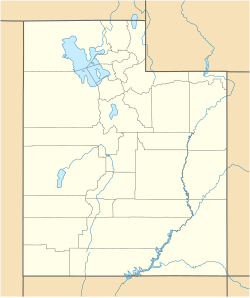Hiawatha, Utah | |
|---|---|
 A few of the structures left at Hiawatha, November 2007 | |
Location of Hiawatha in within the State of Utah | |
| Coordinates: 39°29′3.61″N111°00′47.05″W / 39.4843361°N 111.0130694°W | |
| Country | United States |
| State | Utah |
| County | Carbon |
| Incorporated | 1911 |
| Disincorporated | November 20, 1992 |
| Named after | Hiawatha, a pre-colonial Native American leader [1] |
| Elevation | 2,214 m (7,264 ft) |
| GNIS feature ID | 1428681 [2] |
Hiawatha is an unincorporated community and near-ghost town, formerly a coal mining town in southwestern Carbon County, Utah, United States. While the town's former corporate limits were almost entirely within Carbon County, the western part was within the Manti-La Sal National Forest and a very small part extended west into Emery County.
Contents




